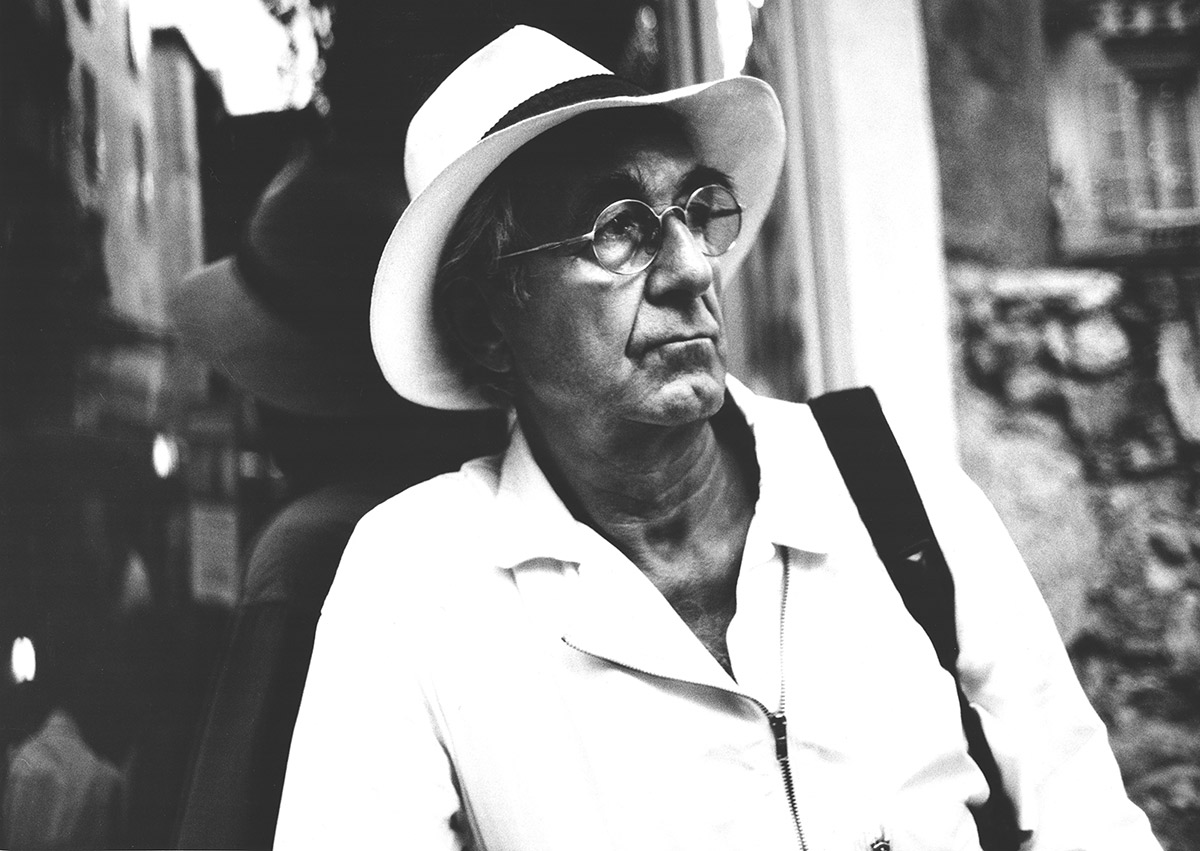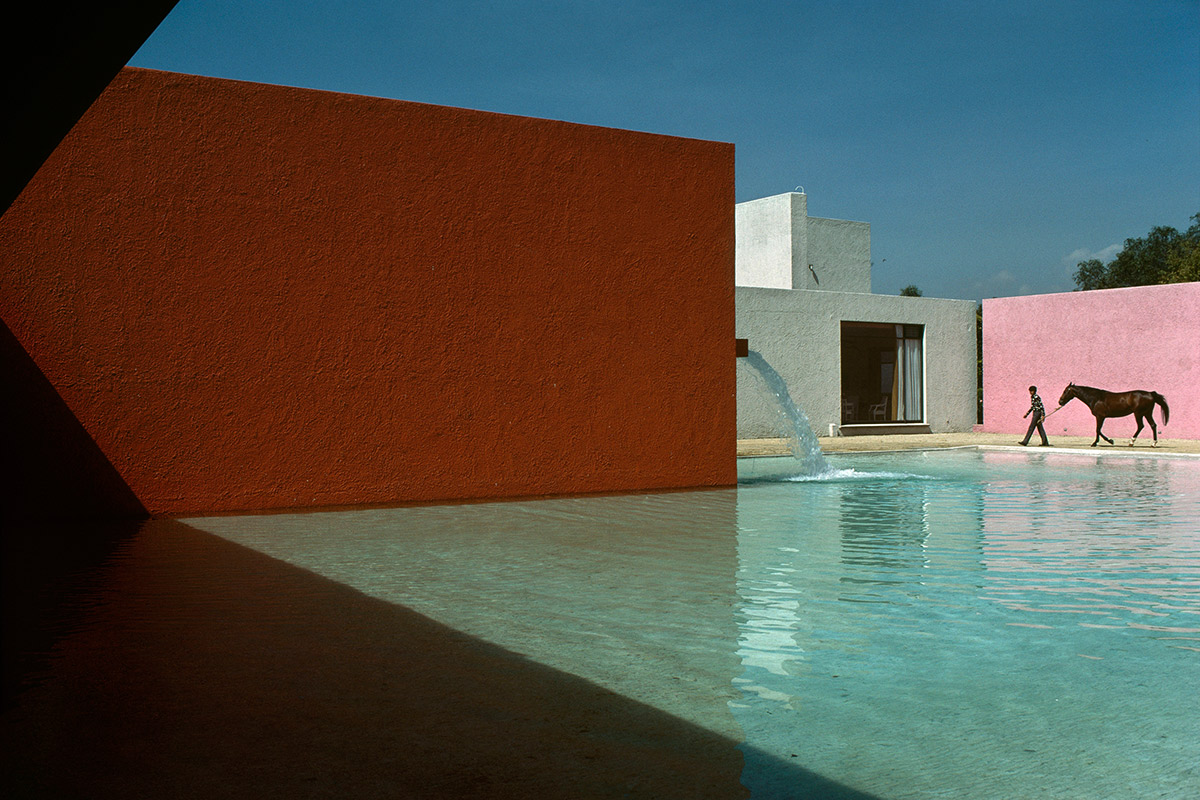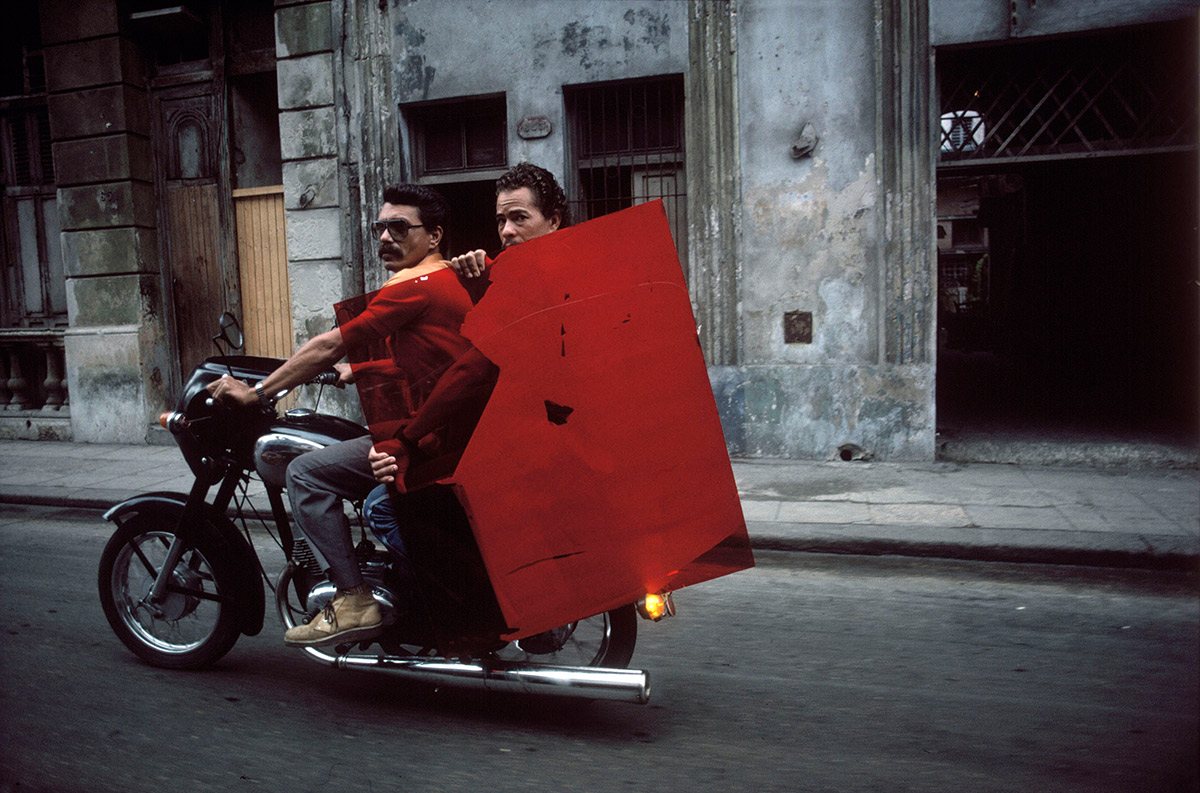
Melchior Imboden, Portrait of René Burri, 1999
© Melchior Imboden
René Burri - in the shadow of a great photographer
Portrait of a great Swiss artist
To adapt what Robert Capa said about a successful photo, Swiss photographer René Burri cannot be accused of not having been close enough to real life. Burri was a doer, who curiously approached life in all its facets with his camera, which he also referred to as his third eye. His unique body of work consists not only of war photography, empathetic picture reporting and timeless portraits, but also architectural photos.
Burri's portraits of Winston Churchill, created in 1946 by the then 13-year-old in Zurich with his father's camera, and of Ernesto Che Guevara, who the photographer recorded during an interview lasting several hours, have made photo history. From a total of six exposed films, a unique series of pictures of Che Guevara was created in Havana in 1963 - one of these pictures has become an icon. After the world-famous photo by Alberto Korda, the shot by Burri is certainly the most frequently reproduced picture of the revolutionary. Decades later, referring to its popularity, Burri jokingly called the picture of the confident Che a heavy ball on his leg - world fame can also be a burden.
Due to the variety of his work, Burri is difficult to categorise as a photographer. His work was guided by the ideal of humane, empathetic and respectful photo journalism. Trained in the 1950s at the School of Applied Arts in Zurich by Joahnnes Itten, Hans Finsler and Alfred Willimann, Burri already came into contact with strict pictorial formalism when he was young.

René Burri, San Cristobál, Mexico, 1976
© René Burri / Magnum Photos Museum für Gestaltung Zürich, Graphics Collection
Towards the end of his life he was said to have had a very critical attitude toward this approach, but could not deny its influence upon his work. For example, the strict geometry in one of his most famous photos, Men on a Rooftop, certainly also owes a debt to the influence of the formalist Finsler. Burri was fascinated with strict postmodern architecture. He made timeless portraits of its creators, such as Le Corbusier and Oscar Niemayer.
In 1959, Burri became a full member of the legendary "Magnum Photos" agency. On 27th April 1947, the world's best photographers had joined together, with their enormous lust for life and with courage and a feeling of responsibility, to collect authentic and true-to-life photographs from all over the world. The work of the agency's photographers continues to the present day, unwaveringly and strikingly pointing out hardship, injustice and suffering all over the world. Burri had already made his mark in 1955 with a very sensitive picture report about deaf and dumb children which was published in the magazine Life. One of the four founders of the agency, Henri Cartier Bresson, who has also often been called the inventor of street photography, is said to have been Burri's most important mentor.

René Burri, Havanna, Cuba, 1987
© René Burri / Magnum Photos Museum für Gestaltung Zürich, Graphics Collection
Another founding member, David Seymour, known as "Chim" for short, sent Burri to Egypt in 1956, shortly after the completion of his studies, to document the Suez Crisis. He was almost killed on this dangerous mission.
Following this, René Burri received assignments in almost all of the crisis areas of the time and travelled to almost every continent, but also took portraits of renowned artists, such as Pablo Picasso, Alberto Giacometti, Jean Tinguely, Yves Klein, Pablo Casals, Patricia Highsmith and Jean Renoir. Separate documentary films including "The Two Faces of China", "Jean Tinguely" and "Indian Summer" complement his work.
Among his numerous publications, Burri's first picture book "Die Deutschen" from 1962 - one year after the construction of the Berlin Wall - is particularly noteworthy. It is regarded as one of the best photo books in history. This monumental work forms a unique social portrait and is still compellingly valid, thanks to its successful portrayal of the divided Germany and its politically neutral perspective. In this work too, Burri is characterised by his extremely human gaze, which shows a predominantly gloomy picture of Germany at the time, a front-line state of the Cold War.
Together with Werner Bischof, René Burri was definitely one of the highest-profile Swiss photo journalists. He was a lifelong user of Leica cameras and also accepted the digital version. Accordingly, in contrast to some contemporaries, he had a positive opinion of digital photography and emphasised its advantages in numerous interviews. The "Dr. Erich-Salomon-Prize of the German Photography Society" awarded to him in 1998 and the "Swiss Press Photo Life Time Achievement Award 2011" also recognise his work. Many international exhibitions have carried his pictures out into the world. René Burri lived with his family in Paris and in Zürich. He died on 20th October 2014 at the age of 81.
LINK René Burri /MAGNUM
